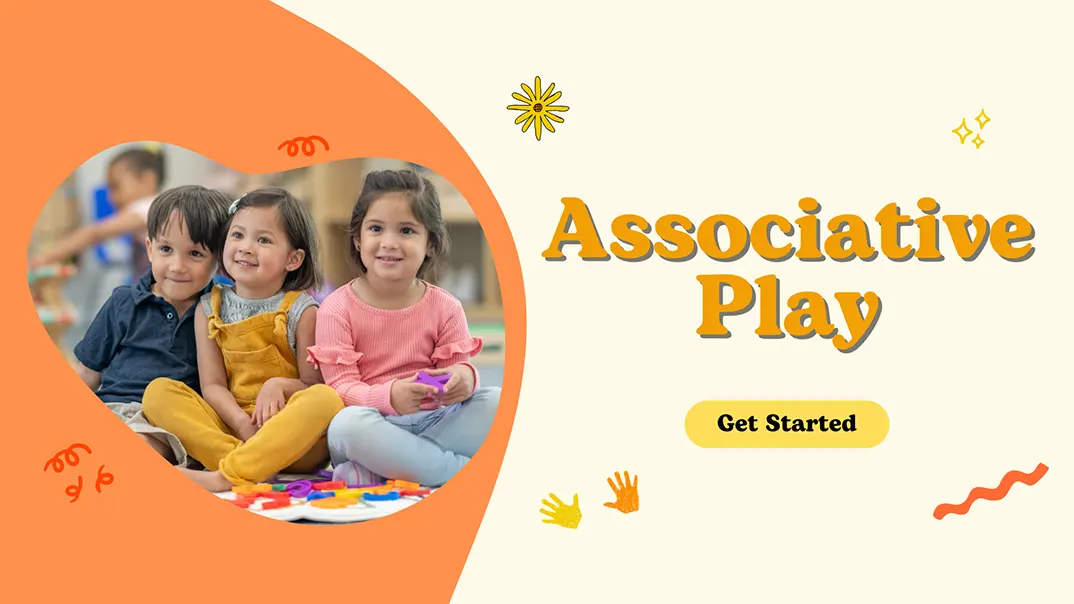Play is widely recognized as the cornerstone of early childhood learning, shaping social, cognitive, and emotional development. Researchers have identified distinct stages of play, from solitary play in toddlers to cooperative play in older preschoolers. Among these stages lies an often overlooked but crucial step: Associative play, where children begin to interact with peers while playing independently, often by sharing materials or talking during their activities.
Although associative play is a normal and important stage, it is often misunderstood or overshadowed by the emphasis on fully cooperative play. A lack of understanding of associative play can lead parents and educators to misinterpret children’s behavior or miss opportunities to guide social growth. The purpose of this article is to explain the features of associative play, highlight its benefits for early development, and provide practical strategies that educators and caregivers can use to support children as they transition toward cooperative play.
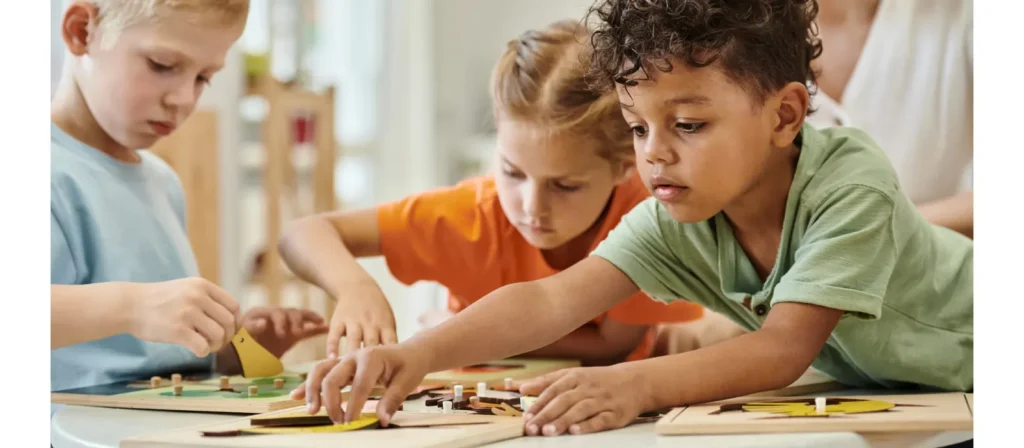
What Is Associative Play?
Associative play is a form of social play where children engage in similar or related activities side by side, sharing materials and casually interacting, but without coordinating their actions or working toward a common goal. It typically occurs in children between the ages of 3 and 5, representing a transitional phase between parallel play and fully cooperative play.
During associative play, children may talk, observe each other, imitate actions, or exchange toys, yet each child maintains their own independent agenda. This stage is critical for developing early communication, empathy, and basic social problem-solving skills.
In early childhood education, associative play is recognized as a key indicator of social-emotional growth. It reflects a child’s increasing awareness of others and their desire to connect, even when true collaboration has not yet developed.
Characteristics of Associative Play
Associative play is marked by a blend of independence and interaction. Unlike cooperative play, where children work toward a shared goal, associative play involves more loosely connected activities with moments of social engagement. This balance allows children to explore their environment while also practicing essential interpersonal skills. Some of the core characteristics of associative play include:
- Individual Play Goals: Each child is engaged in their own activity, even though they may be surrounded by peers.
- Shared Materials: Toys or resources are often shared, even if each child is using them differently.
- Informal Interaction: Children talk, laugh, or react to each other without planning a game together.
- Emerging Social Skills: Associative play supports the early development of turn-taking, empathy, and emotional expression.
- Flexible Boundaries: There’s no clear structure or rules guiding the group—play evolves naturally based on the children’s interests.
Examples of Associative Play
Associative play can appear in many everyday settings and is often spontaneous and informal. While it may seem unstructured to adults, it holds immense developmental value. Here are some relatable examples that illustrate what associative play looks like in real-world scenarios:
- Block Building Together: Two or more children build separate structures using the same pile of blocks, commenting on each other’s creations and occasionally sharing blocks, but not working on a shared project.
- Outdoor Sandbox Play: Children dig and pour sand side-by-side, exchanging tools like buckets and shovels, talking about what they’re doing, but without any coordinated plan.
- Art Table Interaction: Kids paint or draw at the same table, watching and commenting on each other’s work, borrowing crayons, and laughing together without working on the same piece.
- Playdough Station: Several children sit around a table with playdough. Each one is making their own shapes or food items, commenting on each other’s creations, asking for colors, and exchanging tools like rollers and cutters.
- Dramatic Play: Two children put on costumes and chat about roles, while another child joins in by suggesting ideas, though everyone acts out a different story.
Understanding Associative Play in the Context of the 6 Stages of Play
Children’s play develops in predictable stages. These stages, first outlined by sociologist Mildred Parten in 1932, describe how children’s play evolves as their social and cognitive skills mature. Each stage builds upon the last, guiding children from solitary exploration to cooperative group activities. Understanding the bigger picture helps educators and parents see how children gradually move from solitary activity to true cooperation.
Here’s a brief overview of the six widely recognized stages of play:
- Unoccupied Play: This is the earliest form of play, often seen in infants. The child appears to be doing random movements or observing their surroundings without a clear purpose. Though it may look passive, it’s actually the beginning of cognitive engagement.
- Solitary Play: In this stage, the child plays alone, focusing intently on their activity without attempting to interact with others. It’s a normal and essential phase where children develop focus, independence, and imagination.
- Onlooker Play: The child watches other children play but does not join in. They may ask questions or offer comments, showing growing interest in social interaction. This is a bridge between solitary and interactive play.
- Parallel Play: Children play next to each other, often using similar toys or engaging in similar activities, but without direct interaction. They observe and may mimic one another, learning through silent social exposure.
- Associative Play: At this point, children begin to engage with peers more actively. They talk, share, and observe each other while still following their own play agendas. It’s not yet fully cooperative, but it marks significant social development.
- Cooperative Play: This is the most socially complex stage. Children work together toward a shared goal, plan roles, follow rules, and collaborate in imaginative or structured games. It requires communication, teamwork, and self-regulation.
Understanding these stages makes it clear that associative play is not an isolated behavior but part of a larger developmental journey. Recognizing where children are within these stages allows adults to provide age-appropriate support, ensuring that social and emotional growth unfolds naturally.
Benefits of Associative Play
Associative play offers a wide range of developmental benefits that extend far beyond just having fun. While children may not appear to be working toward a shared goal during this stage, the social and cognitive skills they’re building are profound. As children engage with peers through shared activities, even without formal rules or structure, they gain essential tools for lifelong learning and emotional resilience.
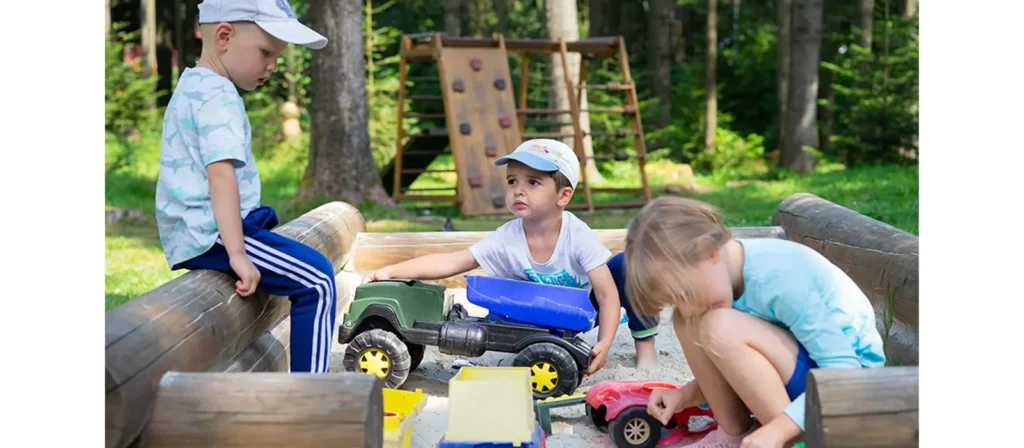
1. Social Development
During associative play, children learn how to interact with peers in meaningful ways. They practice taking turns, initiating conversations, and responding to others. These experiences help them develop empathy, cooperation, and the confidence to join group settings.
2. Communication and Language Skills
Associative play naturally encourages children to talk, ask questions, and share ideas. Even short conversations during play support vocabulary growth, sentence structure, and the ability to express needs clearly. Over time, this builds stronger listening and speaking skills.
3. Emotional Growth
By engaging with peers, children begin to understand the emotions of others as well as their own. Negotiating over toys or responding to a friend’s excitement teaches them patience, flexibility, and self-regulation—important aspects of emotional intelligence.
4. Cognitive Development
Although each child may still focus on an individual project, the exchange of ideas stimulates creativity and problem-solving. Watching a peer build a tower, for example, may inspire a child to try new strategies or rethink their own design.
5. Preparation for Cooperative Play
Associative play lays the groundwork for future teamwork. Children become comfortable with sharing, observing, and loosely connecting with peers, making the transition to fully cooperative play smoother and more enjoyable.
How Associative Play Differs from Other Play Stages?
Associative play often gets confused with other stages of play, particularly parallel play and cooperative play. While they may look similar at first glance, each stage reflects a unique point in social and cognitive development. Understanding the distinctions helps educators and parents recognize where a child is and how best to support their growth.
Associative Play vs. Parallel Play
- Parallel Play: In parallel play, children play side-by-side but do not directly interact with one another. Each child is focused on their own activity, even if they are using the same materials or playing in the same space. This stage is typical among toddlers (around 2–3 years old) and reflects the earliest signs of social awareness.
- Associative Play: By contrast, associative play—usually seen in children aged 3 to 5—involves more active engagement. Children may talk to each other, share materials, or comment on what others are doing, even though they’re still pursuing individual play goals. They are not working together, but they are socially connected through conversation and shared interest.
Key Differences:
| Aspect | Parallel Play | Associative Play |
|---|---|---|
| Interaction Level | Minimal or none | Frequent talking, sharing, observing |
| Focus | Solely on individual activity | Individual play with social elements |
| Age Range | 2–3 years | 3–5 years |
| Communication | Rare | Common, but unstructured |
| Social Development | Early stage | Emerging social awareness |
Associative Play vs. Cooperative Play
- Cooperative Play: In cooperative play, children not only interact but also work together intentionally. They might assign roles, create rules, and collaborate on a common objective—such as building a fort, acting out a story, or completing a puzzle. This stage usually emerges after age 5 and requires more advanced communication, empathy, and self-regulation.
- Associative Play: Associative play does not involve shared goals or coordinated activities. While children may be chatting, helping each other, or swapping toys, they are still largely playing as individuals. There is no unified outcome or role distribution.
Key Differences:
| Aspect | Associative Play | Cooperative Play |
|---|---|---|
| Group Goal | No shared goal | Common purpose or objective |
| Role Assignment | None | Roles may be defined |
| Communication | Casual and spontaneous | Structured and purposeful |
| Collaboration Level | Low to moderate | High |
| Cognitive Demands | Basic problem-solving | Advanced planning and teamwork |
How to Encourage Associative Play?
Associative play develops naturally as children grow, but teachers and parents can create the right conditions to support and strengthen it. By setting up classroom environments that invite interaction and guiding children with simple strategies, adults can help young learners gain the full benefits of this stage.
1. Create Shared Spaces
Children are more likely to engage in associative play when the physical setup of the classroom or home invites them to gather in the same area. Instead of scattering toys into separate corners, arrange open play stations where two or more children can comfortably sit or stand together. This creates natural opportunities for conversation and sharing without forcing cooperation.
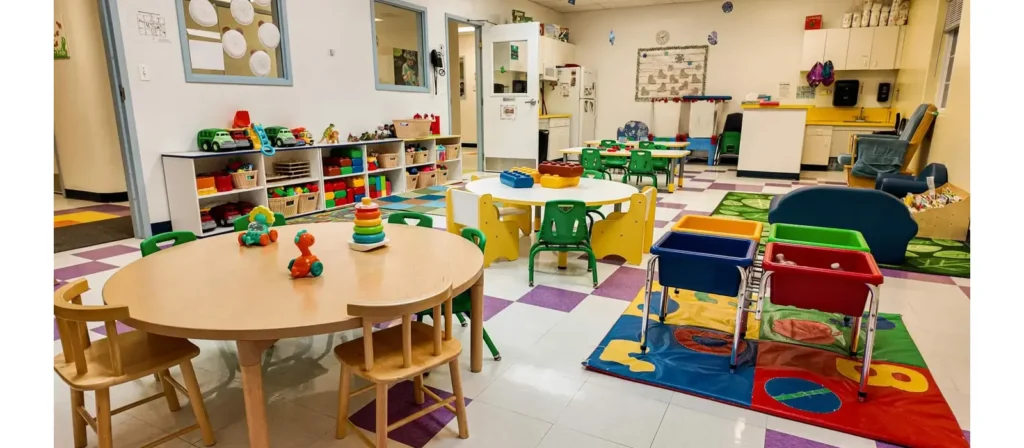
Examples of shared spaces include:
- Art Corners with large tables where several children can paint or draw side by side.
- Sensory Stations such as sand tables or water play tubs that allow multiple children to scoop, pour, and explore together.
- Pretend Play Areas like a toy kitchen or market stand, where children can engage in parallel activities while still interacting with peers.
By designing environments that encourage children to be close to one another, educators and parents set the stage for natural social exchanges.
2. Provide Shared Materials
Having the right materials available is equally important. Associative play thrives when children have resources that can be easily shared, passed around, or used simultaneously. Materials should be plentiful enough to avoid frustration but limited enough to encourage interaction.
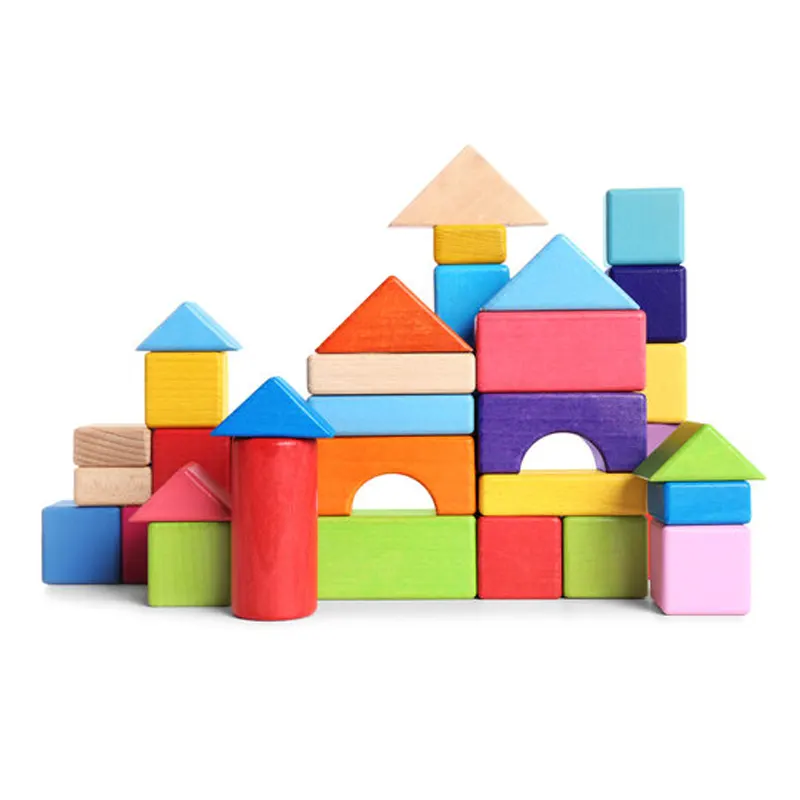

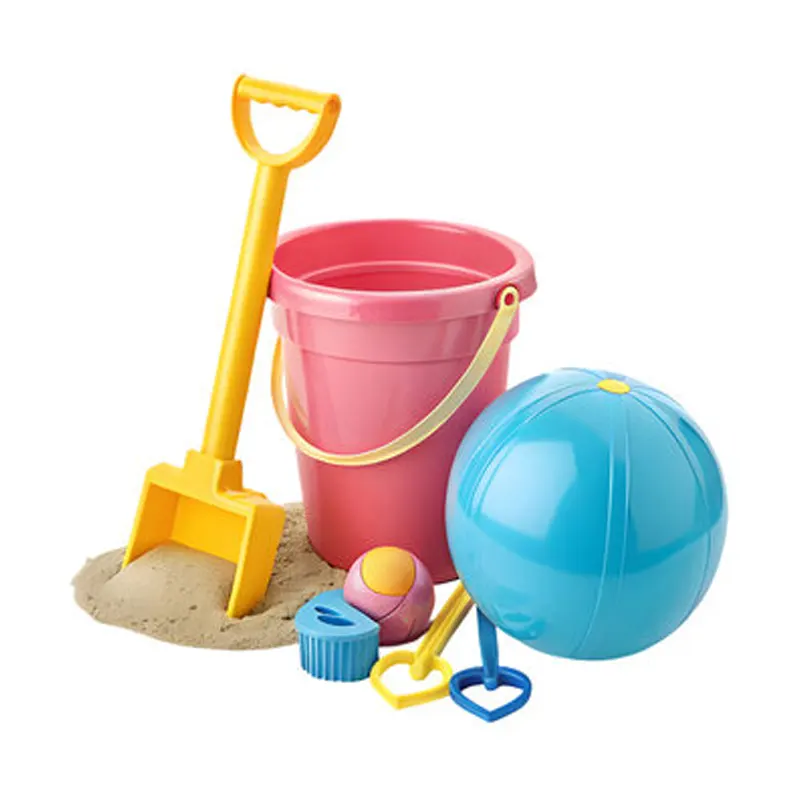
Practical examples of shared materials include:
- Building Blocks or LEGO Sets that children can trade or borrow from one another.
- Art Supplies such as crayons, markers, and glue sticks placed in communal baskets instead of individual sets.
- Loose Parts like buttons, shells, or fabric scraps that invite children to exchange and comment on how they are used.
- Outdoor Play Equipment such as buckets, shovels, and balls that naturally circulate among groups of children.
Providing these materials in shared containers or common areas not only fosters interaction but also teaches children how to negotiate, wait for a turn, and practice generosity.
3. Create Small Group Activities
Instead of organizing fully structured group projects, set up small group play stations where children can work side by side. For example, a water table, sandbox, or pretend kitchen invites children to interact without needing a shared plan.
4. Model Simple Social Interactions
Children learn by imitation. Teachers and caregivers can model behaviors such as passing materials, asking polite questions, or making encouraging comments. Over time, children will copy these interactions in their own play.
5. Encourage Conversation
Prompt children with open-ended questions like “What are you building?” or “Can you show your friend how that works?” Such questions guide children to notice their peers’ actions and respond with words, deepening their social engagement.
6. Allow Flexibility and Independence
Associative play thrives when children feel free to join or leave interactions at their own pace. Avoid pressuring children into cooperation before they are ready. Instead, provide gentle guidance and celebrate even small moments of sharing or communication.
7. Connect Play to Everyday Routines
Encourage associative play through daily classroom or home activities—setting the table, cleaning up toys, or organizing books. These simple shared tasks give children practice in working alongside peers while still maintaining autonomy.
Activities to Support Associative Play
While associative play often emerges on its own, structured activities can gently guide children toward deeper interaction. The following activities are designed to encourage communication, sharing, and connection without requiring full cooperation.
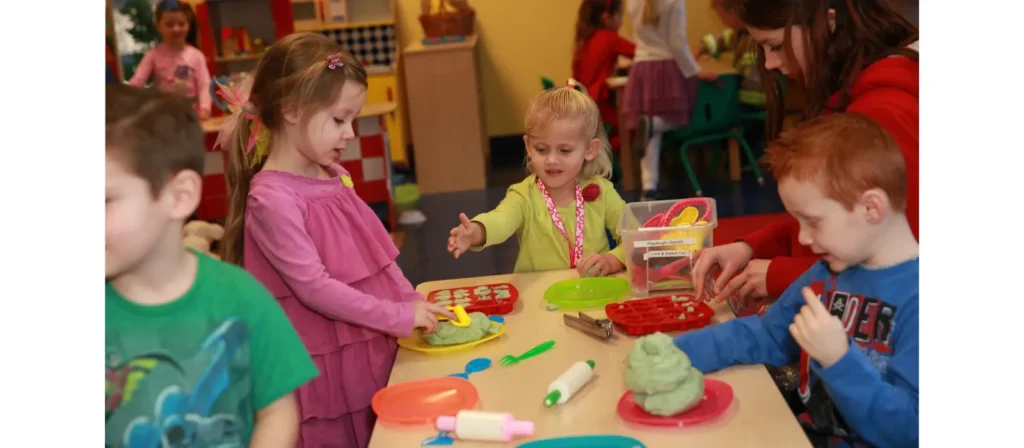
1. Shared Story Basket
Prepare a basket filled with puppets, props, and simple picture books around a common theme, such as animals or transportation. Invite children to choose an item and talk about it with their peers. They may not create a single storyline, but the shared materials encourage conversation, comparison, and spontaneous role-play.
2. Collaborative Collage Wall
Hang a large sheet of paper on the wall and provide a variety of collage materials—magazine cutouts, stickers, colored paper, and glue. Each child can work on a separate section, but the proximity and the shared surface naturally lead to comments like “Look at mine!” or “Can I have that piece?” The wall gradually becomes a group creation, even if each contribution is independent.
3. Music and Movement Circle
Gather children with simple instruments such as tambourines, shakers, or drums. Instead of playing a coordinated rhythm, encourage them to respond to each other’s sounds or dance freely within the circle. The shared noise and laughter help children notice peers while still expressing themselves individually.
4. Gardening Together
Provide a raised bed or large planter box with soil, watering cans, and seeds. Each child can plant their own flower or vegetable in the same container. As they dig, pour, and water side by side, they naturally exchange tools, comment on progress, and learn patience in waiting for turns.
5. Sorting and Sharing Game
Fill a basket with mixed loose parts—buttons, shells, wooden beads, or toy animals. Ask children to sort them by color, shape, or type, but allow them to choose their own way of doing it. While they may not agree on a single system, passing items back and forth sparks conversation and shared discovery.
6. Group Art Easels
Set up two or three large easels close together, each with its own paper roll but with shared paint cups and brushes in the center. Children paint their own pictures, yet they must exchange tools and negotiate space. This creates natural opportunities for comments and cooperative exchanges without forcing a unified outcome.
What is Associative Play in ABA?
In the context of Applied Behavior Analysis (ABA), associative play is recognized as a critical step in the social development hierarchy, often used to assess and support a child’s ability to engage with peers in a meaningful yet developmentally appropriate way. ABA focuses on observable behaviors and data-driven interventions, and associative play offers a valuable behavioral benchmark for social interaction.
In ABA, associative play is not just seen as spontaneous social behavior—it’s a measurable and teachable skill. Behavior analysts observe whether a child demonstrates key behaviors associated with this play stage, such as:
- Playing near peers while sharing materials
- Initiating or responding to conversation during play
- Showing interest in others’ activities
- Demonstrating simple turn-taking or imitation
These behaviors signal a move beyond solitary or parallel play and indicate the beginning of social engagement that can be built upon through structured support.

Why Is Associative Play Important in ABA?
For children, especially those with autism or other developmental delays, associative play can be a critical target behavior in ABA therapy. It helps bridge the gap between independent play and more complex social interactions, such as cooperative play or group instruction.
Developing associative play skills through ABA programs supports:
- Social readiness: Builds foundational skills for later peer interaction and group learning
- Communication development: Enhances spontaneous verbal exchanges in natural settings
- Behavioral flexibility: Encourages a child to tolerate changes and adapt in a social environment
Teaching and Reinforcing Associative Play in ABA
ABA therapists often use techniques like modeling, prompting, shaping, and reinforcement to teach and encourage associative play. For example:
- A therapist may model appropriate peer interaction and guide the child to imitate.
- Prompting (e.g., “You can ask to use the same toy”) supports initial interactions.
- Positive reinforcement (praise, access to a favorite toy) is given when the child engages appropriately.
- Shaping gradually increases the complexity of the interaction—from parallel play, to brief shared moments, to full associative engagement.
Frequently Asked Questions about Associative Play
What is associative play definition?
The associative play definition refers to a stage in early childhood development where children play near each other and interact without organizing their play around a shared goal.
What is the main difference between associative and cooperative play?
The main difference between associative and cooperative play lies in the level of organization and shared purpose. In associative play, children interact—by talking, sharing toys, or observing each other—but they pursue their own individual goals without coordinating their actions. In cooperative play, children actively work together toward a common goal, assign roles, follow shared rules, and collaborate to complete a unified activity.
What is the typical associative play age range?
The typical associative play age range is between 3 to 5 years old. This age marks a key transition from parallel play to more socially engaged behavior, setting the foundation for future cooperative play.
What is associative play vs parallel play?
In parallel play, children play side by side without interacting or acknowledging one another. In associative play, children still play independently but begin to engage with peers through conversation, sharing, and mutual interest—even if their play is not coordinated.
Why is associative play important in early childhood education?
Associative play supports social development, communication skills, emotional regulation, and early problem-solving. It acts as a bridge between independent play and more complex cooperative play, preparing children for group learning environments like preschool or kindergarten.
Conclusion
Associative play is a vital and often overlooked stage in early childhood development that bridges the gap between solitary behavior and full cooperation. It reflects a child’s growing awareness of others and their first meaningful steps into the social world. Through shared materials, casual conversation, and parallel yet interactive play, children build the social, emotional, and communication skills that prepare them for future relationships and learning environments.
For parents, teachers, and therapists, recognizing the value of this stage means creating environments that encourage interaction without forcing full cooperation. Through supportive spaces, shared materials, and guided activities, adults can nurture children’s growth while respecting their independence.

